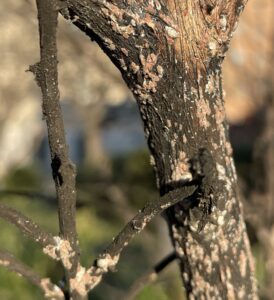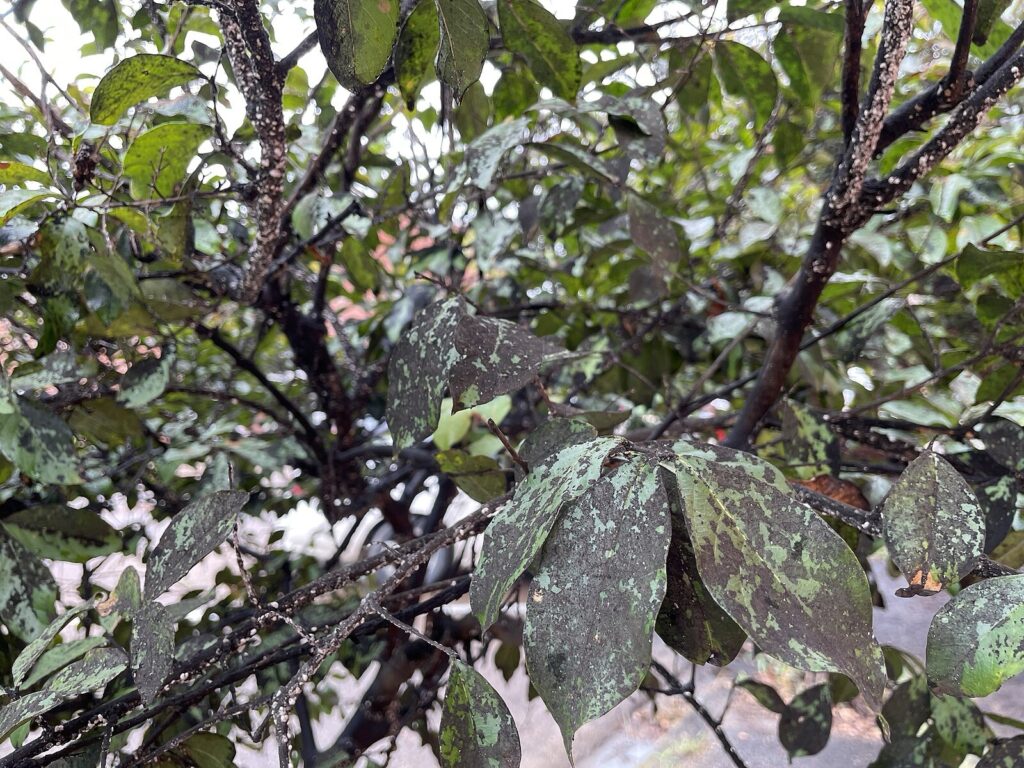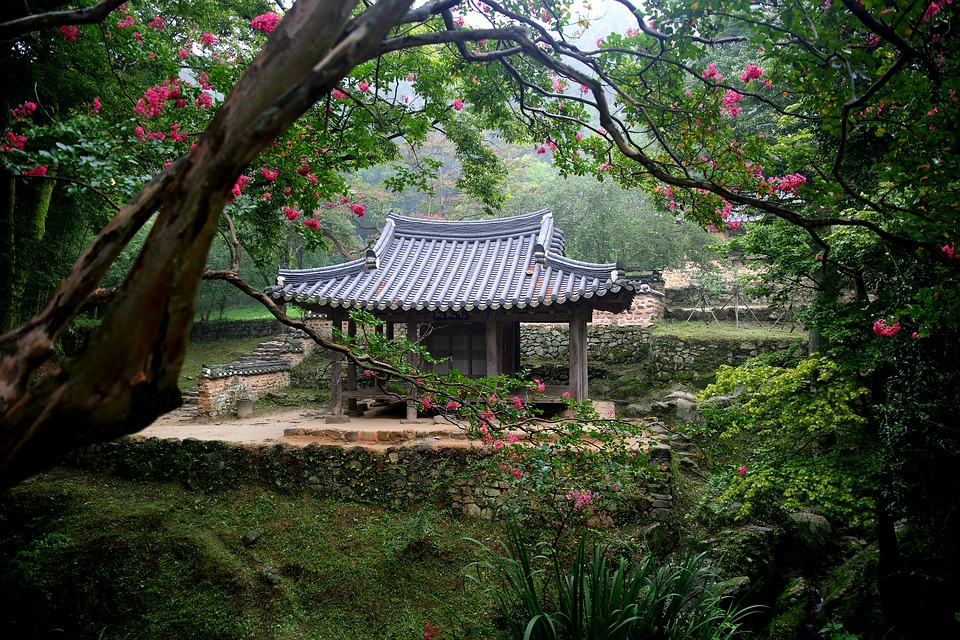Ultimate Guide to Crape Myrtles: Origins, Pruning Tips, Common Pests, and Care
The Truth About Crape Myrtle Pruning: How to Avoid Common ‘Crape Murder’ Mistakes
From Imported Ornamentals to Invasive Concerns the crape myrtle (Lagerstroemia indica), is an import from Asia dating back to the 18th century, has long been cherished as an ornamental feature in American landscapes.
With its vibrant blooms and graceful bark, it was initially celebrated for adding elegance to gardens and urban spaces. However, as horticulturalists and ecologists, we must recognize that this well-loved tree, when not managed mindfully, has also had some unintended ecological consequences.
Crape myrtle was first introduced to North America by plant hunter André Michaux in the late 1700s. Originating from Japan and China, its appeal quickly spread, and it was soon naturalized across South America.



By the 20th century, breeders developed cold-hardy varieties, extending its range into the southern and central United States and contributing to what some ecologists refer to as an “invasive migration.”
Despite its benefits as a hardy, drought-tolerant plant, this widespread use has allowed crape myrtles to establish themselves outside cultivated settings, where they sometimes compete with native flora.
From a horticultural perspective, poorly pruned crape myrtles are an all-too-familiar sight, particularly across North America, where “crape murder” — the severe and disfiguring pruning of these trees — has become a common practice.
This practice not only disrupts the tree’s natural form but also weakens it, making it more susceptible to pests and diseases. For instance, the invasive crape myrtle bark scale has become a serious pest in the southeastern United States, targeting already stressed trees and spreading to other plants.



Additionally, when overused, crape myrtles may displace native species that provide more specialized benefits to local ecosystems, including valuable habitat and nectar sources for pollinators.
While crape myrtles can attract generalist pollinators like bees, they don’t offer the same ecosystem services as native trees, such as oaks or dogwoods, which support a wider array of pollinators and other wildlife.
Further, because crape myrtles are not deeply integrated into the local ecosystem, they offer limited benefits for species that rely on native plants for survival.
As stewards of our landscapes, it’s essential to balance our desire for diverse garden aesthetics with ecological mindfulness, which means championing plants that support biodiversity and long-term ecosystem health.
In short, while crape myrtles have earned a place in American gardens, we should be mindful of their historical journey and ecological impact.
By considering native alternatives, promoting proper pruning practices, and managing invasive species, we can cultivate a healthier balance in our landscapes — one that celebrates beauty while sustaining our natural ecosystems.
What’s in a Name?
The name “crape myrtle” derives from the tree’s distinctive flowers and foliage, which resemble the texture of crêpe fabric and the delicate beauty of the true myrtle plant.
The blossoms have wrinkled, crinkly petals that mimic the finely textured, slightly crimped look of crêpe material, hence the “crape” (or “crepe”) part of the name.
This fabric-like quality made the name memorable and descriptive, helping it stick as the plant became popular in the United States.
The second part of the name, “myrtle,” refers to the resemblance of crape myrtle’s leaves and growth form to the true myrtle plant (Myrtus communis), a Mediterranean shrub with similar characteristics.
Though crape myrtle isn’t related botanically to the true myrtle, the comparison helped familiarize it with European and American gardeners, giving it an exotic appeal as it was introduced from Asia in the 18th century.
As crape myrtle’s popularity grew, especially in the American South, the common name became widely accepted.
It captured both the ornamental quality of the blooms and the plant’s broad appeal as a warm-climate landscape feature.
Native to Asia
In Asia, particularly in its native regions of China, Japan, and Korea, the crape myrtle (Lagerstroemia indica) is known by several names that reflect its beauty and cultural significance:
China: The crape myrtle is called 紫薇 (zǐ wēi), meaning “purple beauty.” This name emphasizes the plant’s most common color (purple or pink) and the beauty of its blooms.
Japan: In Japan, it is called 百日紅 (sarusuberi), which translates to “hundred days red” or “monkey slip,” referring to the long blooming season (up to 100 days) and the smooth, slippery bark that monkeys reportedly can’t climb.
Korea: In Korea, it’s known as 배롱나무 (baerong namu), which roughly translates to “hundred days tree,” similarly referring to its extended blooming period.
Each name reflects different cultural impressions of the tree, such as its vivid bloom period or unique bark. The crape myrtle’s ornamental and cultural appeal in Asia helped inspire its introduction to the West, where it has since become a garden staple.


Natural Control of Crape Myrtle Scale
Controlling crape myrtle bark scale (CMBS) without pesticides requires a combination of physical removal, natural predators, and plant health management. Here are effective, eco-friendly steps for managing CMBS:
1. Prune and Clean Infested Branches
Trim Heavily Infested Branches: Cut back branches with severe infestations to reduce the number of scales present. This also makes it easier to manage remaining scales.
Dispose Properly: Place pruned branches in sealed bags to prevent scales from spreading further, then dispose of them away from the plant area.
2. Use Horticultural Oils or Soapy Water
Spray with Horticultural Oil: Apply a horticultural oil (such as neem oil) that is eco-friendly and non-toxic to beneficial insects when applied correctly. Spray the oil during the dormant season to cover bark and branches thoroughly. This smothers the scales and reduces their numbers.
Soapy Water Wash: Mix mild soap with water and scrub or spray infested areas to remove scale and honeydew. Avoid applying during hot, sunny days to prevent leaf burn.
3. Encourage Natural Predators
Lady Beetles and Lacewings: Both are natural predators of bark scale and can help reduce their populations. Plant nearby flowering plants that attract these beneficial insects.
Release Predatory Insects: If natural populations are insufficient, lady beetles can be purchased and released onto infested trees. Predators like lacewings will also help control the scale population naturally.
4. Regularly Wash the Tree with Water
High-Pressure Water Spray: Use a strong jet of water from a hose to wash the scales off branches and bark. This dislodges both the scales and the honeydew they secrete, which also helps prevent sooty mold from forming on leaves.
5. Maintain Tree Health
Proper Watering and Fertilization: A healthy tree is more resistant to pests. Water and fertilize according to best practices for crape myrtles.
Reduce Stress: Avoid over-fertilization, particularly with high-nitrogen fertilizers, as new growth can attract more pests.
6. Prevent Reinfestation with Mulch Management
Remove Old Mulch and Debris: Scales can overwinter in old mulch and fallen debris. Replace old mulch with fresh material and clear debris to reduce hiding spots for scales.
7. Monitor and Repeat as Needed
Inspect Regularly: Reapply horticultural oil or soapy water as needed, and continue to monitor the tree for signs of re-infestation.
Combine Techniques: Use multiple methods, as repeated treatments and combined strategies often lead to better results without the need for chemical pesticides.
Consistently applying these practices can manage crape myrtle bark scale effectively, keeping infestations under control while protecting beneficial insects and minimizing environmental impact.
If you’re looking for beautiful North American native alternatives to crape myrtle (Lagerstroemia indica), several trees and large shrubs offer similar appeal with vibrant blooms, interesting bark, and ecological benefits that support local wildlife. Here are some excellent choices:
Nine Native Alternatives to Crape Myrtle
1. American Smoke Tree (Cotinus obovatus)
Bloom: Large, airy, smoke-like clusters of pink to purple flowers in late spring to early summer.
Foliage: Leaves turn brilliant shades of red, orange, and purple in fall.
Bark: Peeling, gray-brown bark adds winter interest.
Ecological Benefits: Attracts pollinators and provides habitat for birds.
2. Serviceberry (Amelanchier spp.)
Bloom: Clusters of delicate white flowers in early spring.
Fruit: Edible berries that ripen to blue-black, attracting birds and small mammals.
Foliage: Leaves turn yellow to red in fall.
Ecological Benefits: Supports pollinators and hosts caterpillars of several butterfly species.
3. Eastern Redbud (Cercis canadensis)
Bloom: Bright pink or lavender flowers that emerge on bare branches in early spring.
Foliage: Heart-shaped leaves that turn yellow in the fall.
Bark: Smooth, with a dark, reddish-brown hue.
Ecological Benefits: Flowers are an early source of nectar for native bees, and it hosts caterpillars for several butterfly species.
4. Sweetbay Magnolia (Magnolia virginiana)
Bloom: Fragrant, creamy-white flowers from late spring to early summer.
Foliage: Glossy, dark green leaves with silvery undersides, evergreen in mild climates.
Bark: Smooth, gray bark adds subtle winter interest.
Ecological Benefits: Flowers attract pollinators, while seeds provide food for birds and small animals.
5. Ninebark (Physocarpus opulifolius)
Bloom: Clusters of white or pink flowers in late spring to early summer.
Foliage: Available in various colors, including deep purple, bronze, and green, with attractive fall colors.
Bark: Exfoliating bark peels in strips, creating winter interest.
Ecological Benefits: Attracts pollinators, provides nesting sites, and hosts native insects.
6. Buttonbush (Cephalanthus occidentalis)
Bloom: Round, white, fragrant flower clusters resembling small pincushions, blooming in summer.
Foliage: Shiny, dark green leaves that may turn yellow in fall.
Growth Habit: Thrives in wet or moist soils and can grow near water.
Ecological Benefits: Attracts butterflies, bees, and birds, particularly waterfowl.
7. Flowering Dogwood (Cornus florida)
Bloom: Iconic white, pink, or red bracts in early spring.
Fruit: Red berries that attract birds in late summer.
Foliage: Dark green leaves turn red-purple in fall.
Ecological Benefits: Flowers and fruits support native bees, butterflies, and birds, including migratory species.
8. New Jersey Tea (Ceanothus americanus)
Bloom: Clusters of tiny, fragrant white flowers in late spring to early summer.
Growth Habit: Small shrub that tolerates drought once established, ideal for smaller spaces.
Ecological Benefits: Attracts a variety of pollinators, and its leaves are a larval food source for several butterfly species.
9. Witch Hazel (Hamamelis virginiana)
Bloom: Unique, spidery yellow flowers that bloom in late fall or winter.
Foliage: Dark green leaves turn yellow in fall.
Ecological Benefits: Provides late-season food for pollinators when few other plants are flowering.
Each of these native alternatives provides seasonal beauty along with habitat, food, and ecological benefits for pollinators, birds, and other wildlife. Choosing natives that thrive in your region’s conditions will enhance the health and sustainability of your garden while helping to preserve local biodiversity.
Bonus Article: How to Professionally Prune a Crape Myrtle Tree
Learn how to professionally prune a crape myrtle and avoid the common mistake known as “crape murder” (severe, improper cutting back of branches), ask your landscaper to follow these key steps:
Know When to Prune
Best Time: Late winter, when the tree is dormant, is ideal for pruning. This helps the plant direct energy toward producing new growth and flower buds in spring.
Identify Your Goals
Shape and Health: Aim to maintain the tree’s natural shape, open up the canopy for air circulation, and remove any dead or diseased wood. Avoid drastic cuts, as these disrupt the tree’s form and encourage weak, thin growth.
Pruning Techniques
Remove Suckers: Cut off any growth at the base (suckers) to encourage a strong central trunk.
Trim Low Branches: Remove branches growing inward or crossing over each other, as they can create dense, tangled growth.
Thin Out the Canopy: Selectively thin some interior branches to allow sunlight and airflow. This reduces pest and disease risks while encouraging better flowering.
Avoid “Topping”: Do not top the tree by cutting back major branches. Instead, prune back to a natural junction point where a branch connects with another branch. This preserves the natural shape and avoids weak regrowth.
Multi-stemmed: Crape Myrtle can be rejuvenated by removing a third of the older stems to ground level, this encourages new fast growing shoots to grow from the base.
Use the Right Tools
Sharp Pruning Shears for smaller branches, loppers for medium-sized branches, and a pruning saw for larger branches ensure clean cuts that heal well.
Monitor Yearly
Inspect annually for any weak or damaged wood, and remove as necessary. Minor yearly maintenance pruning is better than heavy, infrequent cuts.
Following these professional pruning practices will help crape myrtles maintain their natural beauty, support healthier growth, and produce vibrant blooms.
For more detailed pruning techniques and photos, the Clemson Cooperative Extension and the University of Georgia Extension are excellent resources on this topic.
References:
Here are some valuable resources and information on growing and maintaining crape myrtles:
Basic Care and Maintenance: Crape myrtles are popular for their vibrant blooms and resilience in warm climates. They prefer full sun (at least six hours daily) and well-draining soil. They are drought-tolerant once established but benefit from regular watering, especially in the first year. For optimal blooming, they need regular feeding with a fertilizer rich in phosphorus. Pruning should be minimal to avoid damaging the plant structure; major cuts are unnecessary and can weaken the tree’s health and appearance. The North Carolina Cooperative Extension provides practical tips on selecting, planting, and maintaining crape myrtles, as well as advice on managing pests and diseases like powdery mildew, which they are prone to in humid conditions GardenDesign.com Sampson County Center.
Choosing the Right Variety: Crape myrtles come in a variety of sizes, from small shrubs to large trees that can grow up to 30 feet tall. Dwarf varieties are ideal for smaller gardens or container growth, while larger varieties can be used as landscape focal points. J. Berry Nursery outlines different cultivars, such as the Black Diamond® series with dark foliage and vibrant blooms, and Emerald Empire® for larger landscapes Creating Beauty That Inspires.
Landscaping and Seasonal Interest: Crape myrtles offer year-round interest with their colorful blooms in summer, distinctive bark in winter, and in some cases, striking fall foliage. This makes them popular choices in landscape design across USDA hardiness zones 6-10. Southern Living’s Garden Guide suggests planting them in spaces that highlight their unique multi-season appeal, with placement that avoids overcrowding to reduce mildew issues Home & Garden Information Center.
These resources provide in-depth guidance on all aspects of crape myrtle care:
NC State Cooperative Extension for detailed growing advice and pest management.
J. Berry Nursery’s Blog for information on cultivars and care tips.
These resources should help you achieve vibrant, healthy crape myrtles in your garden.



